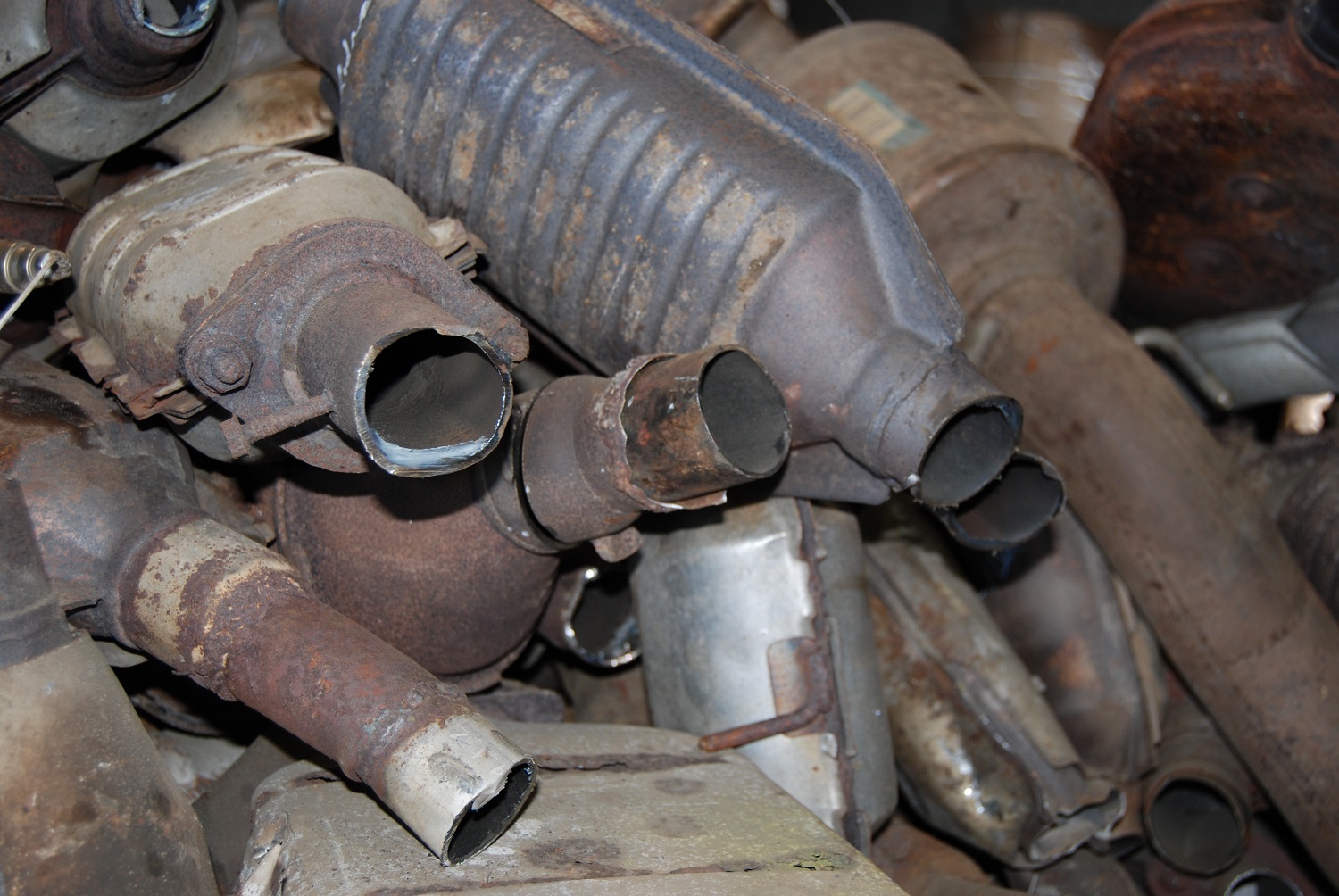Precious metals prices have been climbing consistently over the past few years—and they show no signs of stopping. While the situation is a boon for recyclers of palladium, rhodium, and other precious metals, recyclers have also found themselves in the middle of an ongoing issue related to the continuous price surge: catalytic converter theft. The crime is becoming so common that even The New York Times ran a story on it recently.
Attached to the underside of internal-combustion-engine cars, catalytic converters are a main source of precious metals for recyclers. Because the converters rarely have markings on them, they can be very difficult for recyclers to track and identify, says Brady Mills, ISRI’s director of law enforcement outreach.
To help combat the issue, ISRI’s Materials Theft Subcommittee formed a Catalytic Converter Working Group last October, with Steve Levetan, executive vice president of Pull-A-Part, at the helm. The group aims to help recyclers identify and avoid buying stolen catalytic converters by making their sale more traceable and making the converters themselves more identifiable.
One solution is to encourage car or fleet owners to mark their catalytic converters, Mills says. Some police departments are starting to host “etch and catch” events, through which car owners and sometimes local businesses can bring their vehicles to a specific location to have the converter’s heat shield engraved with license plate numbers or other identifiers. (The strategy found particular traction in California, where the cities of Santa Monica, Rocklin, Vacaville, and Ripon—to name just a few—introduced such programs.) The etchings can help tip off recyclers that a particular catalytic converter may be stolen and can help law enforcement identify the victim of the theft.
With the rise in thefts, some companies are pursuing this tactic on their own. Frontier Communications, an internet service provider with customers across the country, recently began marking their catalytic converters with heat-resistant paint—which may deter thieves—and identifiable etches, a security employee of the company told Mills.
For recyclers who work with catalytic converters, Mills says, the best course of action is to make sure they’re following their local and state laws regarding their handling of the material. Laws may dictate that buyers of catalytic converters obtain a copy of the seller’s government-issued identification, pay by check only, or take a photograph of the seller, for example. Recyclers can also choose to follow a similar protocol even without such a catalytic converter law in place, further reducing the likelihood of buying stolen goods.
ISRI launched ScrapTheftAlert.com in 2008 to help recyclers identify and avoid purchasing stolen material in their area. In just the past couple weeks, users have posted more than a dozen alerts on the site related to catalytic converter thefts across the country. On Feb. 14, Mills posted an update on the ScrapTheftAlert.com homepage. “As more and more vehicle owners have been encouraged to mark catalytic converters by etching and / or heat resistant paint, please provide this information if available,” he wrote. “If possible, indicate how the catalytic converter was removed, e.g. cut with a sawzall or shear. Also, a photo of a catalytic converter from the same make, model, and year vehicle may prove to be helpful.”
ISRI2021, ISRI’s virtual convention, will feature a session focused on catalytic converter theft on Thursday, April 22, from 2:45-3:30 p.m. EST. Click here to register for ISRI2021.













